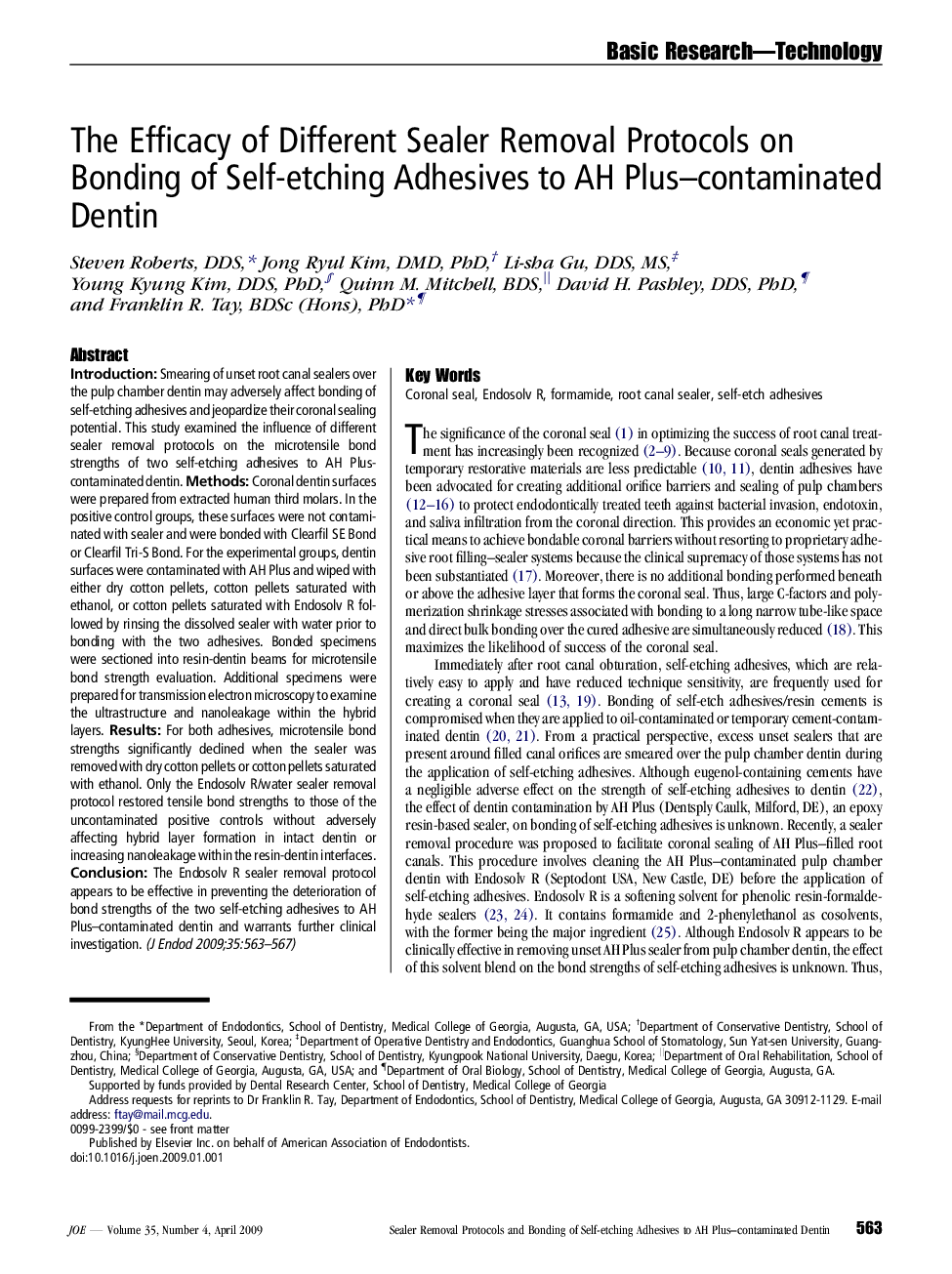| Article ID | Journal | Published Year | Pages | File Type |
|---|---|---|---|---|
| 3148607 | Journal of Endodontics | 2009 | 5 Pages |
IntroductionSmearing of unset root canal sealers over the pulp chamber dentin may adversely affect bonding of self-etching adhesives and jeopardize their coronal sealing potential. This study examined the influence of different sealer removal protocols on the microtensile bond strengths of two self-etching adhesives to AH Plus-contaminated dentin.MethodsCoronal dentin surfaces were prepared from extracted human third molars. In the positive control groups, these surfaces were not contaminated with sealer and were bonded with Clearfil SE Bond or Clearfil Tri-S Bond. For the experimental groups, dentin surfaces were contaminated with AH Plus and wiped with either dry cotton pellets, cotton pellets saturated with ethanol, or cotton pellets saturated with Endosolv R followed by rinsing the dissolved sealer with water prior to bonding with the two adhesives. Bonded specimens were sectioned into resin-dentin beams for microtensile bond strength evaluation. Additional specimens were prepared for transmission electron microscopy to examine the ultrastructure and nanoleakage within the hybrid layers.ResultsFor both adhesives, microtensile bond strengths significantly declined when the sealer was removed with dry cotton pellets or cotton pellets saturated with ethanol. Only the Endosolv R/water sealer removal protocol restored tensile bond strengths to those of the uncontaminated positive controls without adversely affecting hybrid layer formation in intact dentin or increasing nanoleakage within the resin-dentin interfaces.ConclusionThe Endosolv R sealer removal protocol appears to be effective in preventing the deterioration of bond strengths of the two self-etching adhesives to AH Plus–contaminated dentin and warrants further clinical investigation.
